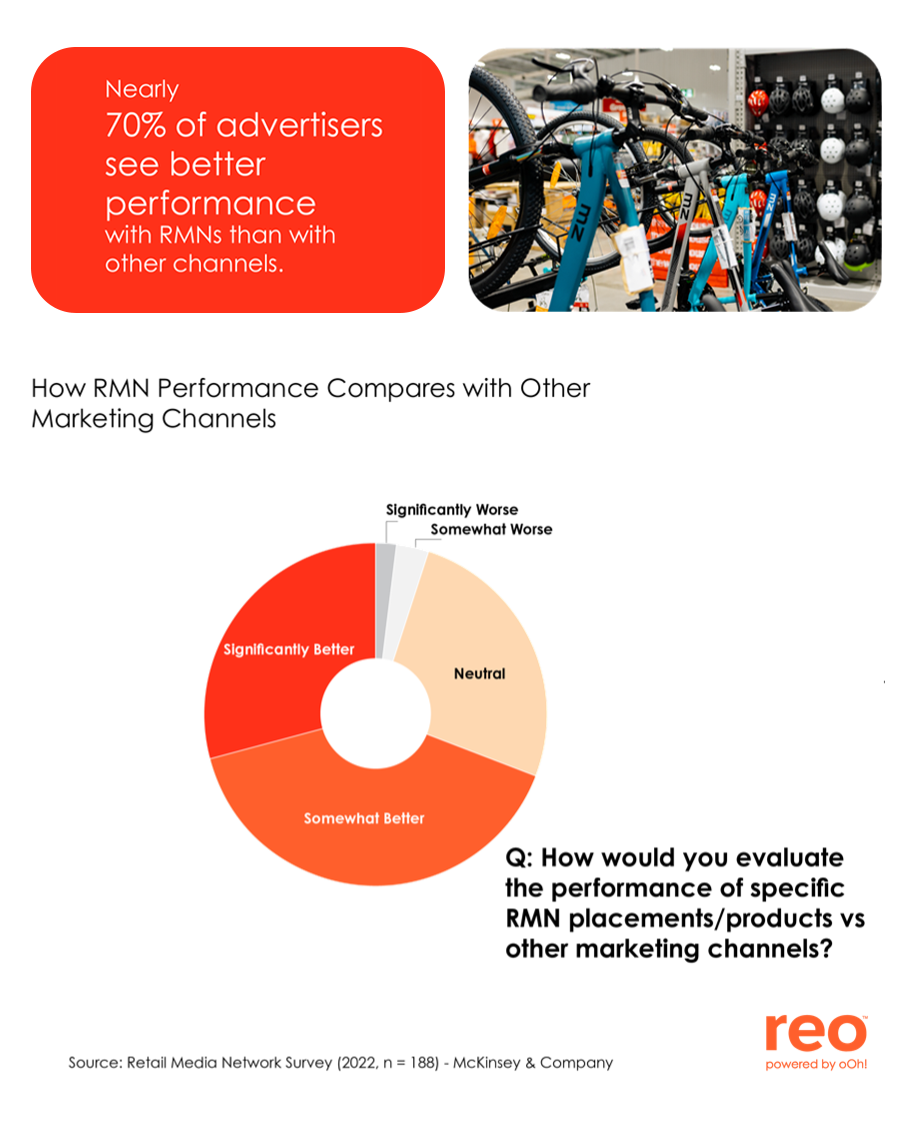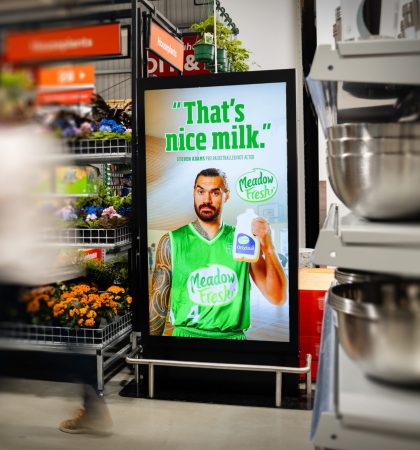This is a guest article, supplied by our instore screens partner, reo and written by General Manager, Barry McGhee.
A time of flux
In a rapidly shifting advertising landscape brands are pivoting from traditional methods toward more targeted approaches like retail media networks (RMN’s). The reason? Today’s consumers expect relevant, engaging experiences – and brands need to deliver at key points throughout the purchase journey. Traditional advertising often struggles to reach shoppers at these critical, purchase ready moments and this is where retail media shines. According to IAB Australia, digital ad spending has surged with retail media a key component of that growth, allowing brands to target consumers more precisely than ever before.
RMNs offer tailored advertising opportunities within retail environments, transforming the consumers’ shopping journey into an immersive brand experience. Leveraging data from the retailer’s ecosystem, RMNs allow for ads that resonate with the consumers’ immediate needs and interests, often using insights from first-party data to offer personalised, contextually relevant ads. This precision targeting is highly appealing; a 2023 PWC survey found that over 70% of consumers favour ads that reflect their shopping and browsing habits. In turn, RMNs provide brands with a channel that directly connects with engaged audiences, capturing attention just as consumers are making purchase decisions.
As a result, RMNs have become a powerful tool for brands to deliver results without relying on traditional third-party data sources that are diminishing due to privacy regulations. By integrating directly with retailers’ platforms, brands can offer value-rich, consumer-first advertising experiences that build trust and loyalty while driving measurable outcomes. Additionally, RMNs benefit from the deep trust and brand equity that top Aussie and Kiwi retailers have established with consumers. In an era where traditional media’s trust has declined, these retailers rank amongst the most trusted brands, providing a strong foundation for effective advertising.
And it works. Over two thirds (77%) of brands and agencies surveyed in Skai’s third annual state of retail media report said that retail media has driven positive results for their organisations this year. Emarketer noted that the majority (66%) of consumers said that the availability of digital instore retail media formats boosts how much they spend, with 38% saying that they would spend a lot more in stores where that signage was available.
Precision targeting and enhanced engagement
Retail media networks enable brands to tap into retailers’ first-party data for advanced audience segmentation, delivering ads that are more relevant and precisely timed, which leads to increased engagement. Consumers often respond better to personalised ads that reflect their browsing and shopping habits, building brand trust and fostering connection. By analysing insights like purchase history, product preferences and browsing behaviours, brands can create content that resonates with shoppers’ current interests and needs.
An additional layer of sophistication is the option for brands to set up unique audience segments within the RMN, which might differ from their own established segments. Retail Media Platforms (RMPs) are helpful here as they facilitate the organisation and access of these new segments for RMNs, enabling brands to effectively target different groups and increase likelihood of conversion. This structured approach not only boosts engagement but also strengthens brand loyalty by providing relevant, tailored ad experiences across the consumer journey.
Return on investment (ROI) and conversion optimisation
Data-driven advertising in RMNs consistently demonstrates a higher ROI. McKinsey found that nearly 70% of advertisers see better performance with RMNs than with other channels. The Boston Consulting Group found that retail media advertising generates significantly higher conversion rates than traditional display ads; targeted campaigns driven by first-party data can yield around 20% improvement in ROI as advertisers reach more high intent consumers in a shopping mindset. Additionally, when brands invest in dynamic ad formats – such as interactive or video content – they often see higher click through rates compared to static formats.

What's next for brands and consumers in the RMN landscape?
Retail Media Networks are rapidly reshaping the brand-consumer relationship by making ads more relevant, personalised and accessible than ever before. By integrating ads directly into the shopping journey, RMNs are bridging the gap between brands and consumers in meaningful ways, enhancing ad receptiveness, reducing fatigue and supporting a more seamless path to purchase.
For brands looking to capitalise on this momentum, now is the time to invest in creative content designed specifically for RMN environments. This includes not only high quality visuals and storytelling, but also dynamic formats like video, interactive ads and in-app placements that can engage consumers where, and when, it matters most.
Strengthening partnerships with retailers will also be critical as collaborative strategies allow brands to leverage retailers’ first-party data and insights to drive more effective, contextually aligned campaigns. Embracing new ad formats will further help brands stay competitive, especially as the demand for interactive and immersive shopping experiences continues to grow.
Looking ahead, RMNs are set to play a transformative role in redefining the consumer journey, making it increasingly interactive, personalised and consumer-friendly. As this landscape evolves, RMNs will empower brands to create meaningful connections with consumers at every step of their journey, blending the convenience of digital with the relevance of personalised engagement.

Barry McGhee
Barry is the General Manager of reo and a retail media OG having worked in the category since 2014. He's also a well known Golf tragic.






